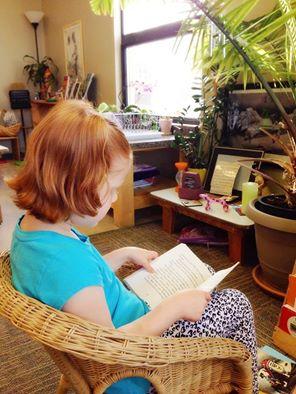
Montessori learning doesn’t just happen at the child’s school. Instead, you can bring Montessori education into the home and help your child to reinforce whatever they learned at school. Here is how to build a Montessori environment at home.
1. Limit and Rotate
The best way to create a Montessori environment is to design spaces in the house to suit your child’s level. Do this in such a way that you don’t overwhelm the child. For example, occasionally rotate toys and clothing, but limit the number of choices.
Limiting the number of clothing and toys makes it easier for your child to be independent in self-care and when cleaning up toys. You can involve the child in picking and choosing clothes to foster independent thinking.
Montessori philosophy also emphasizes minimalistic spaces. Put a few things on the shelf and leave the rest of the space for the child to use.
Also, the Montessori philosophy was developed in an era before television and mobile phones. While your child can use digital devices for learning, limit the number of screens in the house, and keep time spent on digital devices to a minimum.
2. Simplify Your Home and Create Designated Spaces
The amount of alteration will depend on your child’s age. For example, you don’t have to alter your home for a baby significantly. Simple changes to the baby’s sleeping and play area are enough to create a Montessori environment. You can add basic accessories like a child-safe mirror and sensory toys.
Remember that the designated spaces must be safe for your child. In particular, the space should be free of any sharp objects and have no access to stairs or other hazards. Also, secure nearby furniture and seal any electrical outlets.
The designated spaces will become larger as the child gets older. At some point, you may wish to set aside an entire room or a bedroom for the child to learn and advance their Montessori education.
3. Get Appropriate Materials
Although Montessori education emphasizes learning through play, your child doesn’t necessarily require fancy materials to learn. Everyday household objects can be the perfect learning materials for your child. The materials can help your child to have better language, gross motor skills, fine motor skills, and sensory skills.
The following items may be ideal for a Montessori environment.
- Bedroom. Get a low platform bed for your child and put it in the sleeping area. A low shelf for toys and books can also be ideal in the bedroom.
- Kitchen. Buy a strong stool that the child can use to access food on the kitchen table and do other kitchen activities.
- Bathroom. Put another strong stool in the bathroom so that the child can learn how to brush their teeth and wash their face.
You can also have a study area with a small table and a comfortable chair for the child to do their work.
4. Have Baskets of Books
Reading remains a wonderful way for your child to advance their Montessori education. Get baskets of books and put them at strategic places in the home. For instance, put a basket of seasonal books in one corner of the living room. Toilet learning books will also be handy if you put them in the bathroom.
5. Choose a Natural and Simple Decor
Many parents often want their child’s rooms to have bright colors. However, children perform better in a calm environment. Rather than a colorful decor, choose a simple neutral color for the walls. And instead of cartoon posters, select framed art and photos to decorate your child’s room.
Montessori education has maximum benefits for your child, particularly if you choose the best school. Miniapple International Montessori School provides high-quality Montessori education that will help your child develop better. Contact us to get started.

